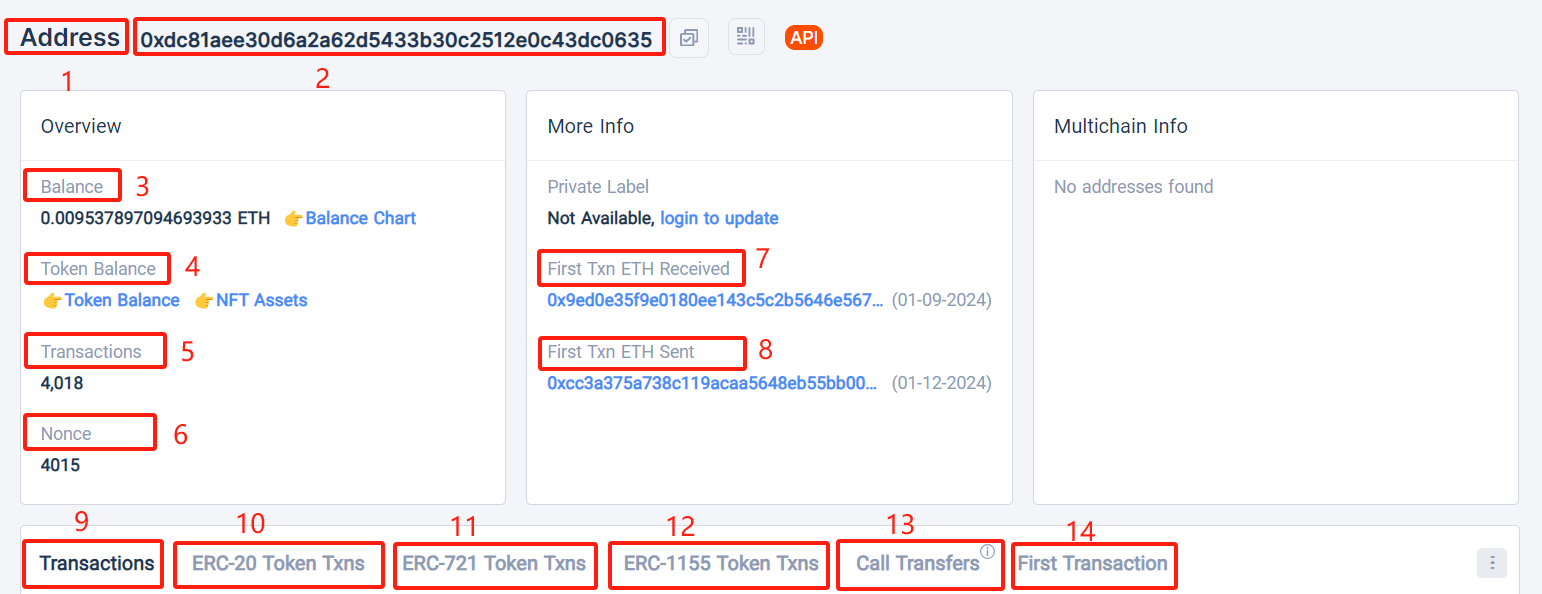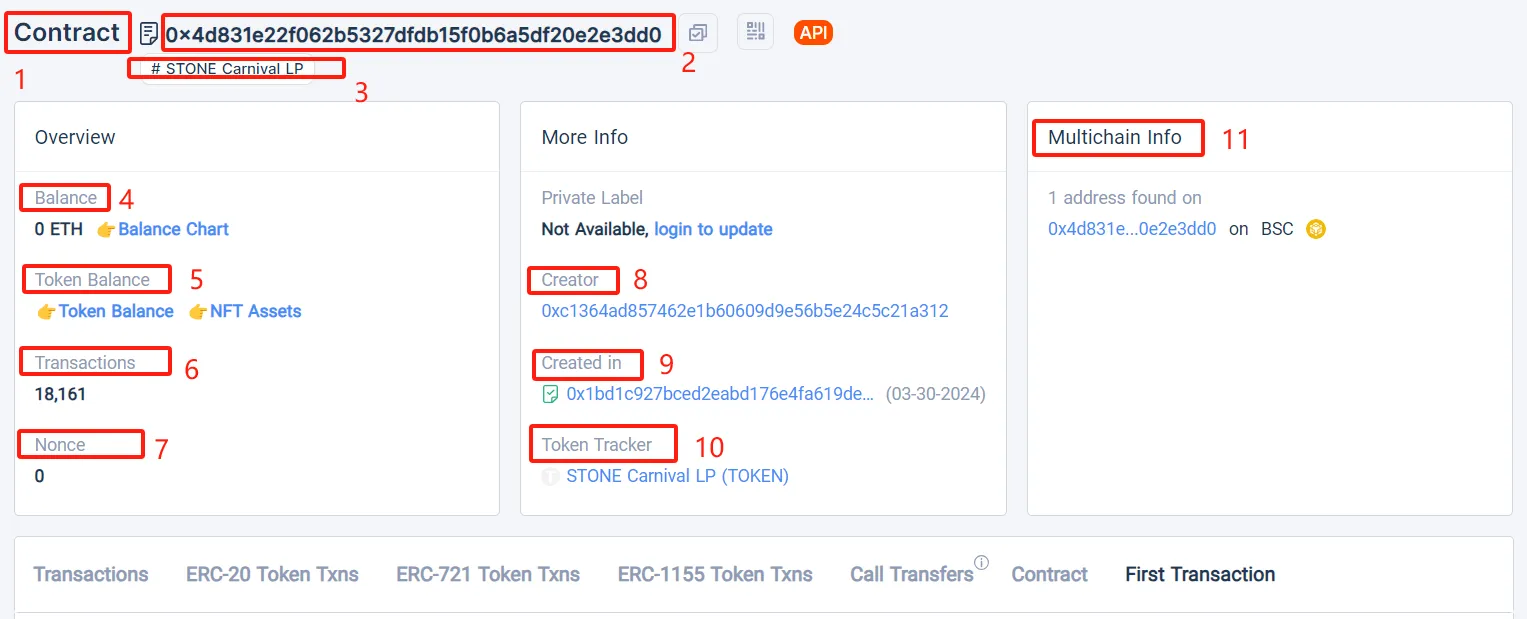How to Understand Ethereum Address?
How to Understand Ethereum Address?
An Ethereum address is a unique identifier used to interact with the Ethereum blockchain. Similar to a bank account, it allows users to send and receive Ether ( ETH) and other tokens (such as USDT, NFT) on the Ethereum network.
Types of Ethereum Addresses:
- Externally Owned Accounts (EOAs): These are normal addresses, a bank account, are used by individuals to hold and transfer Ether and tokens.
- Contract Accounts: These are smart contracts deployed on the Ethereum blockchain. They have associated code and can execute predefined functions when triggered by individuals. <What are Internal Transactions> can give more clues.
Externally Owned Accounts (EOAs)
Once you generate a wallet address and deposit into some tokens, you will be able to query it from blockchain.
Normally, an EOA has the following important data,
- address type - address or contract.
- address hash - it is represented as a hexadecimal string, typically starting with "0x", and consists of 40 hexadecimal characters.
- balance - the ETH asset the address holds.
- token balance - the token assets the address holds.
- transactions - the trading count on blockchain, means the total count of the transferring and receiving.
- nonce - a sequential number of transactions, it increments by one for each new transaction sent from the account.
- first txn ETH received - the transaction in which the ETH asset is received the first time.
- first txn ETH sent - the transaction in which the ETH asset is sent out the first time.
- transactions list - the normal transaction list, including receiving and sending.
- ERC-20 token txns - the ERC20 token transaction list, including receiving and sending.
- ERC-721 token txns - one type of the NFT transaction collection.
- ERC-1155 token txns - the other type of the NFT transaction collection.
- call transfers - the internal transaction list, in which the address interacts with contract.
- first transaction - the first time trading activities on each token.
 .
.
Contract Accounts
If a smart contract, e.g. Token is deployed onto blockchain, it will be accessible by programmer through its ABI(Application Binary Interface) . A smart contract can be categorized by two types:
- Token Contract - These contracts are used to create and manage digital tokens on the Ethereum blockchain, ERC-20, ERC-721, ERC-1155 are all Token Contract
- Non-Token Contract - These contracts are used to execute code to implement some business logic. For example, Defi swap contract, mixer contract, Oracle contract, game contract etc.
Sometimes, the contract involve both Token and Non-Token, it is also a common case.
Let's see the data of a Token smart contract,
- address type - address or contract.
- contract hash - it is same with EOAs.
- token name - the name representing the asset.
- balance - the ETH asset the token holds itself.
- token balance - the token assets hold by the contract.
- transactions - the trading count on blockchain, means the total count of the transferring and receiving.
- nonce - not applicable, smart contract has no nonce.
- creator - the address who deployed the contract.
- created in - the transaction by which the contract is deployed.
- token tracker - the token the smart contract generate.
- multichain info - normally the same smart contract is deployed on multi chain.
 to get notification for any of the new Token deployed on blockchain.
to get notification for any of the new Token deployed on blockchain.